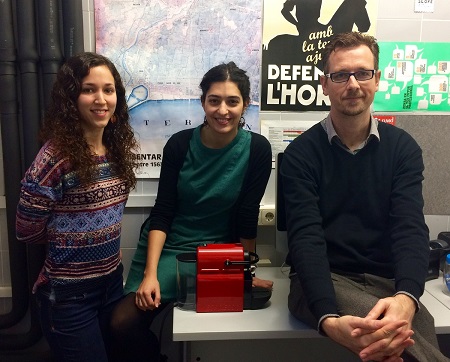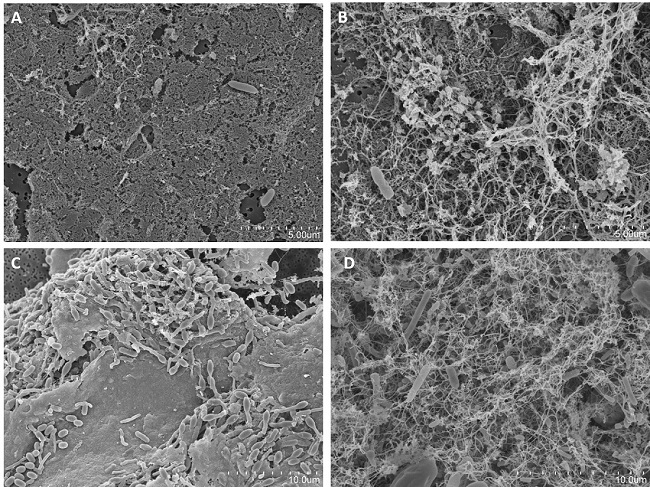
A study led by the Cavanilles Institute of Biodiversity and Evolutionary Biology of the University of Valencia (“The coffee machine bacteriome: biodiversity and colonisation of the wasted coffee tray leach”) is among the most high-profile articles published in the Nature group. As measured by the Altmetric indicator, the study, published in late November, is the 94th most viewed in the world from among more than 119,000 articles of a similar age
The study, signed by Cristina Vilanova, Alba Iglesias and Manuel Porcar, also ranks second in the group of articles scoring in the 99th percentile, that is, those most read, of the 1,738 scientific reports of a similar age from around the world.
"The article has had extensive media impact. It has a score of over 600 in the Altmetric index, that is to say, it is in the top 100 recent articles most cited in the world. Also, it was mentioned in the New York Times and aroused a great deal of interest in Scientific American, not to mention the half a thousand tweets", explains Manuel Porcar, a researcher at the Cavanilles Institute of Biodiversity and Evolutionary Biology and a member of the group.
The work is the first systematic analysis made of the bacteria present in the waste reservoir of capsule coffee makers, which sampled ten Nespresso machines in operation for a year, located in departments, research institutes, biotechnology companies or homes. The research outcomes, published in Scientific Reports, of the Nature group, show, for the first time, that the container where the capsules and a small amount of the water used for making the coffee accumulate is a rich substrate for bacterial growth. Some of these bacteria may be associated with diarrhoea or digestive problems, so experts recommend cleaning the container and washing hands after handling.
The Almetric indicator describes that the retweets of this article reach a potential audience of about a million and a half people. The study published by researchers from the Cavanilles has also been viewed by over 30,000 people, with some daily peaks of more than 3,000 visitors since 23 November.
Additionally, research demonstrates that caffeine does not prevent the rapid colonisation of the tray by bacteria, and microbial evolution results in a group of resistant bacteria which are apparently very different. The resulting group is rich in species which have previously been associated with the coffee plant or its fermentation process, such as Acinetobacter and Bacillus.
Reasons
The reasons why the research team has conducted this study are that the capsules provide a habitat that had not been studied before and also because "it is an extreme habitat, with caffeine, which kills bacteria", according to Manuel Porcar. The expert believes that research has found a certain echo for "the originality of the subject, combined with its familiarity". Furthermore, "everyone has a capsule coffee maker or knows someone who has one. A recurrent comment on Twitter was how come that nobody had ever thought of this before. In the era of metagenomics, when we have analysed the most unlikely habitats, it is surprising that this had not yet been done", says Porcar.
Manuel Pocar has also been struck by the treatment given to this issue by some media, in an alarmist tone. "We are aware that the risk of Nespresso coffee makers has favoured the dissemination of our work. But let us be clear: the coffee made with these machines does not pose any microbiological risk. It is an appliance in contact with food, and as such, it must be given a regular cleaning", adds Manuel Porcar.
Altmetric
Altmetric is a set of tools and indicators measuring the impact of scientific research published on the Web, used as an alternative or a supplement to the citation indices and the impact factor. It extends beyond existing tools by adding others such as mentions in the social media, mainstream media or blogs, the number of views and downloads, the origin of the views and various other factors, applied to scientific articles, books, videos or web pages, among others. The article level metrics (ALM) is the level of analysis most widely used, as it provides information about interactions such as blog mentions, the number of downloads, the number of citations and retweets on Twitter, Facebook likes or comments, inclusion in bibliographic markers or presence in bibliographic managers.
Reference article:
Cristina Vilanova, Alba Iglesias & Manuel Porcar. “The coffee-machine bacteriome: biodiversity and colonisation of the wasted coffee tray leach”.
Scientific Reports 5. Article number 17163. Published online: 23-November-2015. DOI. 10.1038/srep17163
Link to article: http://www.nature.com/articles/srep17163
Images:

















